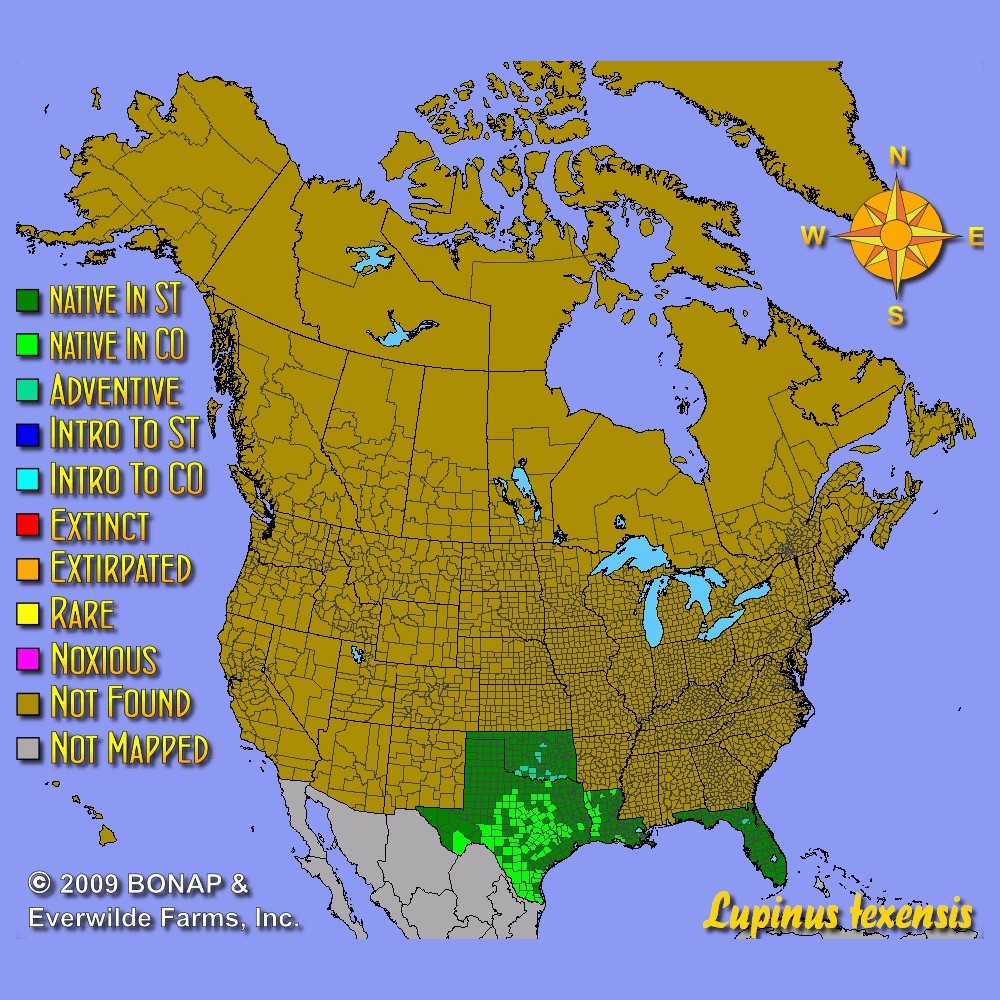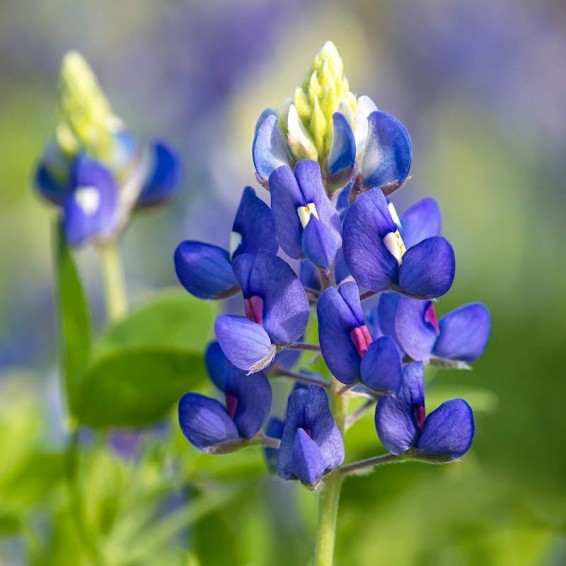Texas Bluebonnet Seeds
- HOW TO GROW
- FAST FACTS
- REVIEWS
HOW TO GROW
Sowing: To soften the hard coating on these Texas bluebonnet seeds, rub them lightly with sandpaper or soak them in 180 degrees F water overnight before sowing. Sow them in early spring, planting 1/2" deep. Keep the soil lightly moist until germination.
Growing: These seedlings grow very slowly and are rather fragile. Water them occasionally and protect from freezing temperatures. Though mature plants tolerate drought conditions well, provide water occasionally in very dry weather. This plant can be poisonous to livestock if present in excessive amounts. These plants resent having their roots disturbed.
Harvesting: For cut Texas bluebonnet flowers, choose stems with flowers that have just opened. Strip the foliage that will fall below the water level, and place in water immediately.
Seed Saving: As the seed pods develop, watch them carefully. As soon as they ripen fully they will split and drop their seed. When the pods begin to turn brown, remove them and spread them out to dry. Remove the seed from the pods and store it in a cool, dry place. Keep in mind that Texas bluebonnet seeds are highly poisonous.
FAST FACTS
Common Names: Texas Lupine
Latin Name: Lupinus texensis
Species Origin: US Native Wildflower
Type: Native Wildflowers
Life Cycle: Annual
USDA Zones: 5, 6, 7, 8, 9, 10, 11
US Regions: California, Mountain, Arid/Desert, Plains/Texas, Midwest, Northern, Northeast, Southeast
Seeds per Ounce: 800
Stratification: No Stratification
Germination Ease: No Stratification
Sunlight: Full Sun, Part Sun
Height: 10 Inches
Color: Red, Blue
Bloom Season: Blooms Late Spring, Blooms Early Summer
Uses: Deer Resistant
Giving as Gift
I was thrilled to find these seeds to gift to a Texas native. Ordering and delivering were easy and efficient. Thanks!
Texas Bluebonnet
The order was filled quickly.
love them!
Bluebonnets
I planted these seeds about 2 years ago and im still waiting on the flowers to emerge. The seeds sprouted quickly and I have quite a few of these plants and theyre healthy. I live in northeastern Tennessee and our soil is mainly clay so that might be whats holding them back. No complaints for the seed quality though. Hoping to see flowers soon! Still great quality!
DESCRIPTION

HOW TO GROW
Sowing: To soften the hard coating on these Texas bluebonnet seeds, rub them lightly with sandpaper or soak them in 180 degrees F water overnight before sowing. Sow them in early spring, planting 1/2" deep. Keep the soil lightly moist until germination.
Growing: These seedlings grow very slowly and are rather fragile. Water them occasionally and protect from freezing temperatures. Though mature plants tolerate drought conditions well, provide water occasionally in very dry weather. This plant can be poisonous to livestock if present in excessive amounts. These plants resent having their roots disturbed.
Harvesting: For cut Texas bluebonnet flowers, choose stems with flowers that have just opened. Strip the foliage that will fall below the water level, and place in water immediately.
Seed Saving: As the seed pods develop, watch them carefully. As soon as they ripen fully they will split and drop their seed. When the pods begin to turn brown, remove them and spread them out to dry. Remove the seed from the pods and store it in a cool, dry place. Keep in mind that Texas bluebonnet seeds are highly poisonous.
FAST FACTS
Common Names: Texas Lupine
Latin Name: Lupinus texensis
Species Origin: US Native Wildflower
Type: Native Wildflowers
Life Cycle: Annual
USDA Zones: 5, 6, 7, 8, 9, 10, 11
US Regions: California, Mountain, Arid/Desert, Plains/Texas, Midwest, Northern, Northeast, Southeast
Seeds per Ounce: 800
Stratification: No Stratification
Germination Ease: No Stratification
Sunlight: Full Sun, Part Sun
Height: 10 Inches
Color: Red, Blue
Bloom Season: Blooms Late Spring, Blooms Early Summer
Uses: Deer Resistant
Reviews
Review
Giving as Gift
I was thrilled to find these seeds to gift to a Texas native. Ordering and delivering were easy and efficient. Thanks!
Review
Texas Bluebonnet
The order was filled quickly.
Review
love them!
Review
Bluebonnets
I planted these seeds about 2 years ago and im still waiting on the flowers to emerge. The seeds sprouted quickly and I have quite a few of these plants and theyre healthy. I live in northeastern Tennessee and our soil is mainly clay so that might be whats holding them back. No complaints for the seed quality though. Hoping to see flowers soon! Still great quality!






